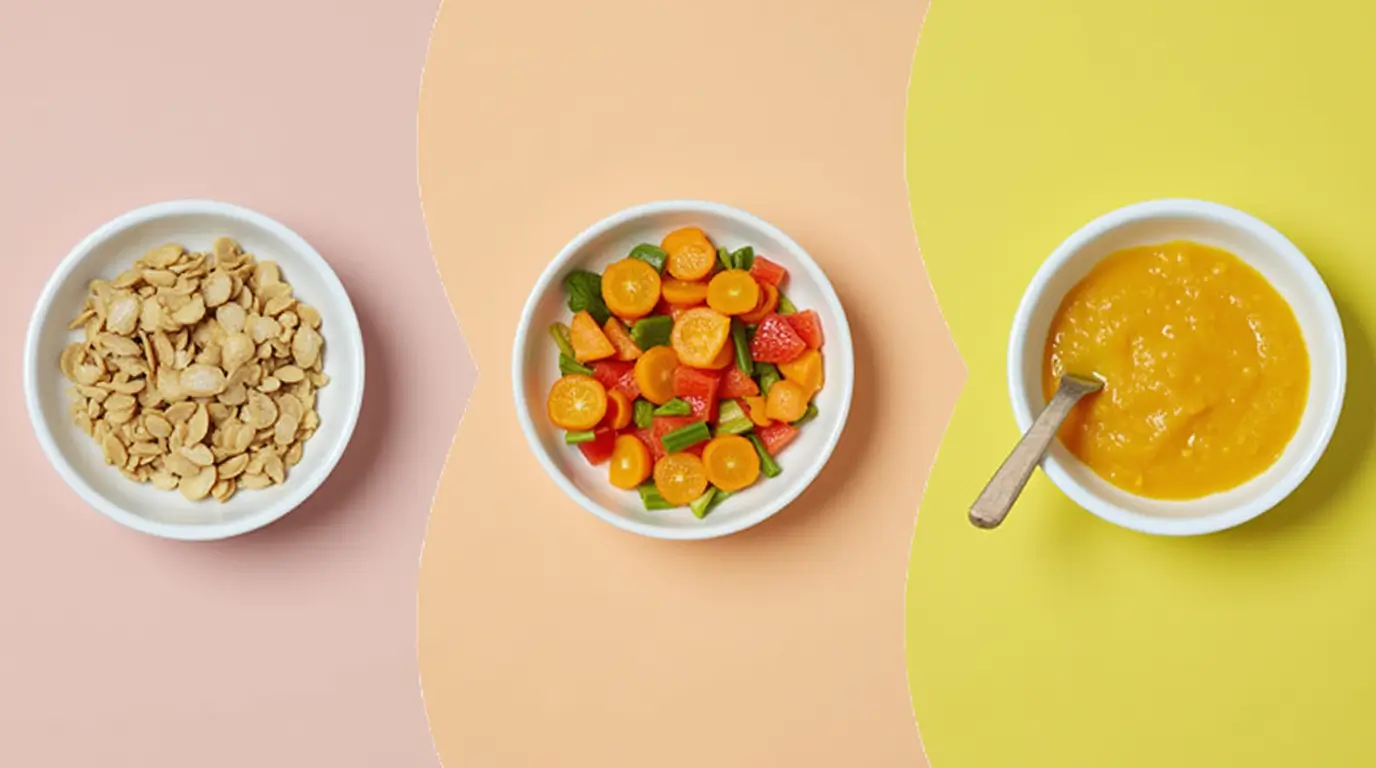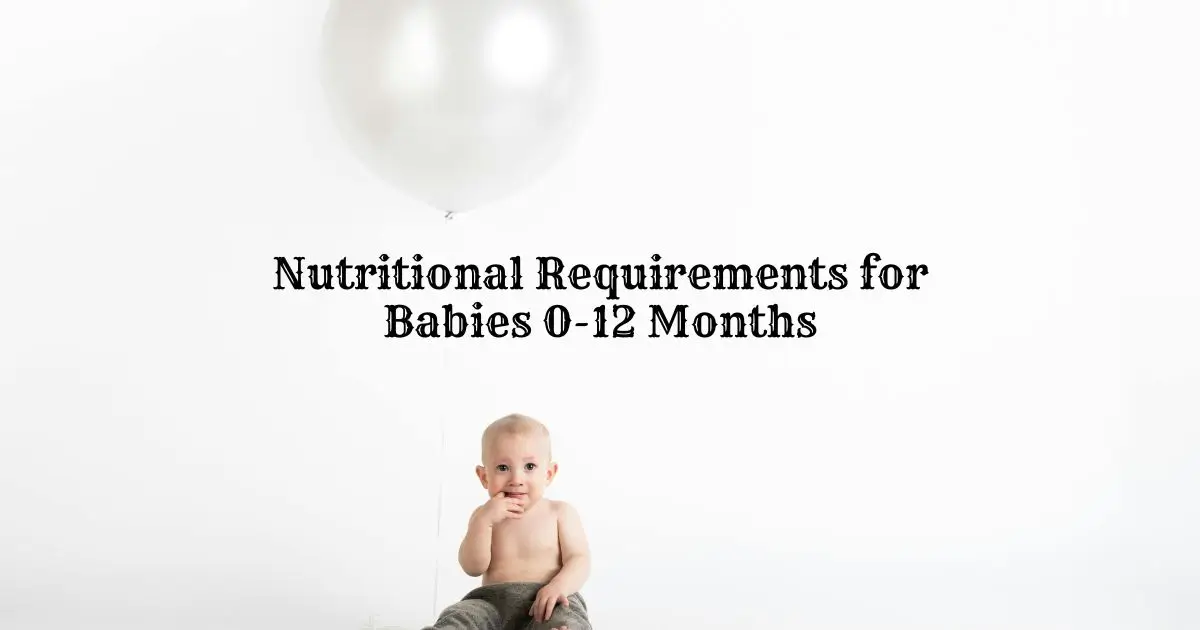Table of Contents
How to Make Baby Food : Introducing homemade baby food to your little one is a rewarding and cost-effective way to ensure they receive the best nutrition. Store-bought baby food can be convenient, but making it at home allows you to control the ingredients, flavors, and texture. In this guide, we will explore everything you need to know about making baby food, including preparation techniques, storage tips, and nutritional guidelines.
Benefits of Making Baby Food
How to Make Baby Food : Homemade baby food offers numerous benefits, including:
- Nutritional control – You decide what goes into your baby’s meals.
- Cost-effective – Preparing baby food at home is more affordable than store-bought options.
- Customizable textures and flavors – Tailor food to your baby’s preferences and developmental stage.
- Fewer preservatives and additives – Your baby gets fresh and natural ingredients.
- Encourages healthy eating habits – Introducing wholesome foods early fosters good nutrition habits.
Essential Equipment for Making Baby Food
To make baby food efficiently, you need the right tools. Some essential equipment includes:
- Blender or food processor – To puree food into smooth textures.
- Steamer or saucepan – To cook fruits and vegetables gently.
- Freezer trays or storage containers – For storing portions.
- Spoons and baby bowls – For feeding and serving.
- Mesh strainer – Helps refine textures for younger babies.

How to Make Baby Food at Home?
Making baby food at home is simple and involves a few key steps. Follow this process to create nutritious meals for your baby:
Step 1: Choose Fresh Ingredients
Select fresh, organic fruits, vegetables, and grains. Ensure they are ripe and free from pesticides.
Step 2: Wash and Peel
Thoroughly wash all produce under running water. Peel when necessary to remove tough skins.
Step 3: Cook Softly
Steam, boil, or bake foods to soften them. Steaming is the best method as it retains most nutrients.
Step 4: Blend or Mash
Use a blender, food processor, or fork to puree food. Adjust the texture based on your baby’s age.
Step 5: Store Properly
Store baby food in airtight containers in the refrigerator (up to 3 days) or freeze in portioned trays (up to 3 months).
How to Make Baby Food : Nutritional Guidelines for Baby Food
Ensuring your baby gets balanced nutrition is essential. Here’s a breakdown of key nutrients:
| Nutrient | Importance | Best Sources |
|---|---|---|
| Iron | Supports brain development | Spinach, lentils, chicken |
| Calcium | Strengthens bones | Yogurt, cheese, broccoli |
| Protein | Builds muscle and tissue | Eggs, fish, beans |
| Fiber | Aids digestion | Oats, peas, apples |
How to Make Baby Food : Introducing Baby to Solid Foods
The transition from breast milk or formula to solid foods is an exciting milestone for both babies and parents. Most babies are ready for solids around six months old when they show signs like good head control, interest in food, and the ability to sit with support.
The key is to start with single-ingredient, soft-textured foods such as pureed vegetables, fruits, and iron-fortified cereals. These gentle introductions help babies adjust to new flavors and textures while minimizing the risk of allergies or digestive issues. Start with small spoonfuls once a day and gradually increase the variety and quantity as your baby becomes more comfortable.
As you introduce solids, it’s important to follow a slow and steady approach. Offer one new food at a time and wait at least three to five days before introducing another. This method helps identify any potential allergic reactions, such as rashes, diarrhea, or vomiting.
Common first foods include mashed sweet potatoes, bananas, avocados, and well-cooked, pureed carrots. Avoid honey, whole nuts, and cow’s milk before age one, as they can pose health risks. Additionally, ensure that all foods are soft, smooth, and easy to swallow to prevent choking hazards.
Babies will still rely on breast milk or formula for most of their nutrition, so solids should be introduced gradually alongside their regular feedings.

Encouraging a positive feeding experience is essential for building healthy eating habits. Let your baby explore food by touching and tasting different textures. Be patient and responsive to their hunger and fullness cues—forcing a baby to eat can create negative associations with food.
Make mealtime enjoyable by sitting together and offering plenty of smiles and encouragement. Some babies take to solids quickly, while others need more time to adjust. It’s normal for them to reject certain foods at first, but repeated exposure can help them develop a taste for new flavors. With time and consistency, your baby will develop the skills needed for a balanced and nutritious diet.
Introducing solids should be a gradual process. Follow these guidelines:
How to Make Baby Food: When to Start Solid Foods
Most babies are ready for solids around 4-6 months. Signs of readiness include:
- Ability to sit up with minimal support.
- Interest in what others are eating.
- Loss of the tongue-thrust reflex.
Common First Foods for Babies
Start with single-ingredient, easy-to-digest foods like:
- Mashed bananas
- Steamed carrots
- Cooked apples
- Pureed sweet potatoes
How to Prevent Allergies
Introduce one new food at a time and wait 3-5 days before introducing another. Watch for allergic reactions such as rashes, vomiting, or diarrhea.
Transitioning to Textured Foods
As your baby grows, gradually introduce thicker textures by:
- Mashing with a fork instead of blending.
- Mixing purees with soft-cooked grains.
- Offering small, soft finger foods like avocados.
Baby Spitting Up Curdled Milk
If your baby is spitting up curdled milk, it could be due to:
- Immature digestive system – Common in young infants.
- Overfeeding – Feeding smaller amounts may help.
- Reflux issues – Keeping your baby upright after feeding can minimize reflux.
- Food sensitivities – Monitor reactions to certain foods.
How to Store and Reheat Baby Food Safely
| Storage Method | Temperature | Shelf Life |
|---|---|---|
| Refrigerator | 40°F (4°C) | 3 days |
| Freezer | 0°F (-18°C) | 3 months |
- Always label containers with the date.
- Reheat food using a microwave or stovetop, ensuring even heat distribution.
- Never refreeze thawed baby food.

How to Make Baby Food : Homemade vs. Store-Bought Baby Food
| Feature | Homemade Baby Food | Store-Bought Baby Food |
|---|---|---|
| Ingredients | Fresh, natural | May contain additives |
| Cost | More affordable | Expensive over time |
| Variety | Customizable | Limited flavors |
| Shelf Life | Shorter | Longer due to preservatives |
Baby acne breast milk: A Natural Remedy or Myth?
Some parents believe breast milk helps clear baby acne. While breast milk contains antibodies and antimicrobial properties, baby acne is usually hormonal and clears on its own. However, applying breast milk may help soothe irritation.
Common Myths About Baby Acne
- Myth: Baby acne is caused by dirty skin – It’s hormonal and not linked to hygiene.
- Myth: It requires medical treatment – Most cases resolve naturally within weeks.
Safe Remedies for Baby Acne
- Use warm water and a soft cloth – Avoid harsh soaps.
- Apply breast milk sparingly – It may soothe redness.
- Keep baby’s face dry – Avoid excess moisture.
When to See a Doctor
Consult a pediatrician if:
- Acne worsens or spreads.
- Pimples appear infected or ooze pus.
- Baby has a fever or other concerning symptoms.
Final Thoughts on Making Baby Food
Homemade baby food is a nutritious, cost-effective, and safe choice for introducing solids. By following proper preparation, storage, and feeding guidelines, you can provide your baby with the best start in their food journey.
Remember, each baby is different—be patient, experiment with flavors, and enjoy this milestone with your little one!




One thought on “How to Make Baby Food”
Comments are closed.